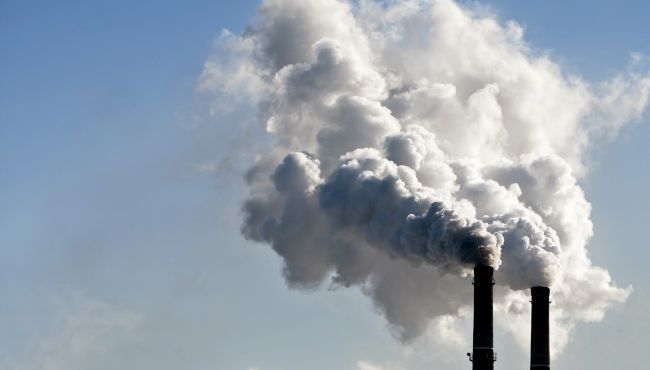Treading Lightly
GreenSpa.Africa’s Charné le Roux provides invaluable pointers on how to manage your business’ carbon footprint, something that is becoming increasingly necessary in the escalating climate change crisis

Image from Shutterstock
The world’s authority on climate change, the IPCC (Intergovernmental Panel on Climate Change), has just released its most recent report for the 2020 decade and it has a clear message: there is an urgency to take more ambitious action to reduce our greenhouse gas emissions – and only if we act now, will we secure a liveable sustainable future for all.
We often read about our carbon emissions and how that translates into our carbon footprint, or that of a business or product. But, do you know how a carbon footprint is measured and what it means for our spa and wellness businesses?
A carbon footprint is a practical measure of the impact that certain activities have on the environment and, in particular, on climate change. It also relates to the generation of greenhouse gases which, in effect, insulate our planet (as in a greenhouse) and prevents heat from escaping into the outer atmosphere, thereby gradually heating the surface of the planet further. This increasing surface temperature is playing havoc with global climatic conditions, in particular causing ice caps and glaciers to melt, increasing ocean temperatures, droughts as well as flooding, and various severe weather anomalies. Nowadays rarely a week goes by without extreme nature events breaking world news.
''THE SPA INDUSTRY
is as
CONNECTED TO
the
AGRICULTURAL AND PETROLEUM INDUSTRY
as is any other. Therein lies our
OBLIGATION TO
PLAY OUR PART
in reducing carbon emissions.''
Greenhouse gases
Greenhouse gases are produced largely by industrial activity, but their prevalence also reflects everyday human activities. Electricity generation, through the burning of fossil fuels, is one of the biggest culprits, followed closely by exhaust emissions from millions of internal combustion engines in trucks, aircraft, motor cars, i.e. the whole transportation industry. Other industrial processes that may seem insignificant on a local scale, but nonetheless contribute significantly to greenhouse gas output into the atmosphere, include manufacturing, agriculture, storage, recycling and waste disposal.
A carbon footprint is expressed in equivalent tons of either Carbon or Carbon Dioxide (CO2) (1000kg of CO2 equals 270kg of Carbon) and would typically be the release in weight of either substance into the atmosphere, having been released from its solid form within the earth.
Is the contribution that our industry makes to global emissions significant enough though to require our immediate attention?
How spa fits in
While it is true that most global emissions are attributable to the world’s largest companies, small and medium companies make up roughly 90% of businesses worldwide. There is furthermore a close interconnectedness between large and small entities along the supply chain. The spa industry is as connected to the agricultural and petroleum industry as is any other. Therein lies our obligation to play our part in reducing carbon emissions.
The imperative is to develop climate change resilience person-by-person, company-by-company, by achieving ever diminishing carbon footprints. In the process, individual spa businesses will benefit from proactively leading industry competitors, pre-empting carbon regulation and shifting consumer demands, while potentially avoiding institutional funding restrictions and high staff turnover.
So where do we start?
What would be a good carbon reduction goal?
There are a number of carbon calculators available that can assist our businesses in determining their carbon footprint. One was developed locally by Food and Trees for Africa, which calculates the CO2 emitted by any business process or travel method and then assigns the number of trees that should be planted to offset that amount of carbon. Trees and plants are wonderful carbon sequesters! As a tree grows, it stores more and more carbon.
A viable reduction target is to decrease emissions by 50% by 2030 and achieve net zero by 2050.
A calculation exercise is not, however, a pre-requisite before carbon reduction action can begin. There are a number of carbon reducing steps that we can take to start with the process right away.
• Go local. Support your local communities and local practices. Remember that due to the transport and likely additional packaging requirements associated with imported products, these have a much larger carbon footprint than most products produced and supplied to local areas.
• Travel lightly. Together with other transport systems, motor vehicles themselves contribute significantly to global warming. Promote alternative transport methods such as mass transport, walking and cycling with your spa staff and guests. Allocate the most attractive parking bays to electric cars and motor cycles.
• Where do you bank? Many banks continue to finance fossil fuel projects and so essentially continue to fund the perpetuation of the climate crisis. Consider a bank that supports sustainability and offers green loans to those seeking to address climate change.
''THE ENERGY WASTED
in producing relatively
PURPOSELESS PRODUCTS
that ultimately simply
END IN A BIN,
in addition to the
METHANE GIVEN OFF
in
LANDFILL SITES,
are significant
CONTRIBUTORS TO
our
CARBON FOOTPRINT.''
• Buy good quality. It’s evident that good quality products last longer and do not end up as waste. Processing waste is energy demanding and often gives rise to harmful gas emissions.
• Offer food in season. Fruits and vegetables that are grown and harvested seasonally not only taste better and cost less than imported foods, but they are generally more nutritious.
• Grow your own. Apart from the delight in offering veggies from your spa garden to guests, you can guarantee them that they will eat food produced without industrial processes. Start small with herb seedlings from your local nursery in pots that the spa chef can keep near the kitchen and expand as confidence grows.
• Reduce meat in spa meals. The production of meat products is energy-, water- and resource- intensive. One sometimes forgets that the process involves the production, manufacturing and processing of animal feeds and their transport to feedlots for consumption, the transportation of animals to abattoirs, and then the processing, packaging and transportation of the meat products to the consumer. These processes also cause a significant amount of waste and pollution, particularly when compared with the production of fruit and vegetables.
• Reduce and recycle spa waste. The energy wasted in producing relatively purposeless products that ultimately simply end in a bin, in addition to the methane given off in landfill sites, are significant contributors to our carbon footprint. Reduce wasted packaging by buying in bulk and avoid products with excessive packaging. For example, recycling a glass bottle saves 0.5kg of carbon compared to making a brand new one. Composting and recycling where possible can reduce the carbon emitted due to disposal of spa waste by 40%.

Image from Shutterstock
As turnkey sustainability practitioner, Charné le Roux advocates and influences sustainability in the wellness industry. Her work includes creating the Sustainable Spa Practitioner Course, GreenSpa Guide and GreenSpa Calculator. Email charne@greenspa.africa